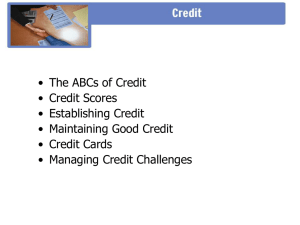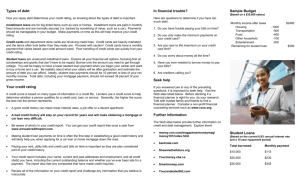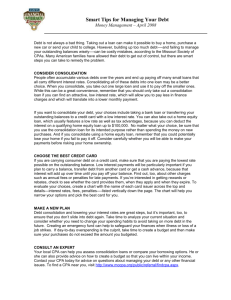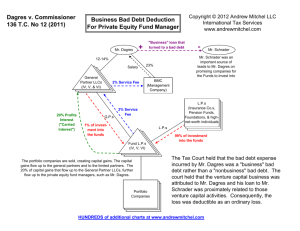Debt Know How
advertisement
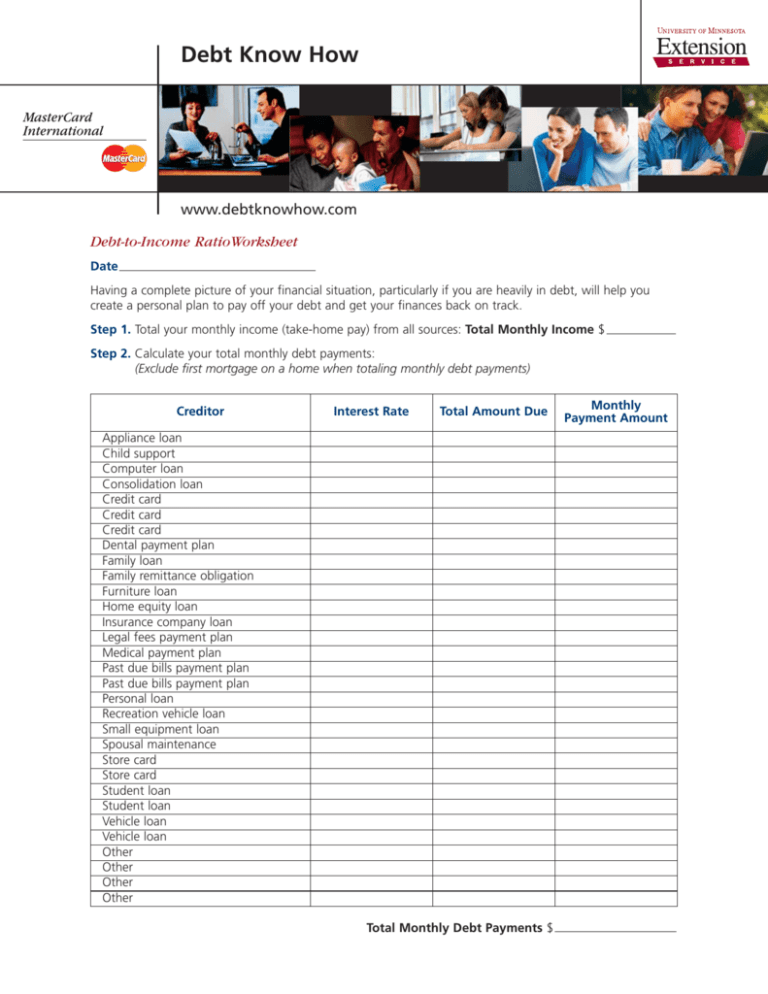
Debt Know How www.debtknowhow.com Debt-to-Income RatioWorksheet Date Having a complete picture of your financial situation, particularly if you are heavily in debt, will help you create a personal plan to pay off your debt and get your finances back on track. Step 1. Total your monthly income (take-home pay) from all sources: Total Monthly Income $ Step 2. Calculate your total monthly debt payments: (Exclude first mortgage on a home when totaling monthly debt payments) Creditor Interest Rate Total Amount Due Appliance loan Child support Computer loan Consolidation loan Credit card Credit card Credit card Dental payment plan Family loan Family remittance obligation Furniture loan Home equity loan Insurance company loan Legal fees payment plan Medical payment plan Past due bills payment plan Past due bills payment plan Personal loan Recreation vehicle loan Small equipment loan Spousal maintenance Store card Store card Student loan Student loan Vehicle loan Vehicle loan Other Other Other Other Total Monthly Debt Payments $ Monthly Payment Amount Step 3. Calculate your Monthly Debt Payments-to-Disposable Income Ratio*: Divide monthly disposable personal income (take-home pay) into monthly debt payments (excluding the first mortgage on a home). Monthly debt payments Debt payments-to-disposable income = Take-home pay Example: $400 $2,500 =16% Debt-to-Income Ratio * Non-mortgage debt payments above 20% of your income indicate that steps may be needed to pay down debt. Non-mortgage debt payments over 20% exceed your net income borrowing limit. This is an indication that you may need to develop a personalized plan to get back on track. Source: Adapted by Cindy M. Petersen, University of Minnesota Extension Service from, Debt Know How — Assess Your Debt, MasterCard International, Inc. and Garman, E. T. & Forgue, R. E. (2003) Personal Finance (7th edition) pp 47 & 188. Boston, MA: Houghton Mifflin Company.
